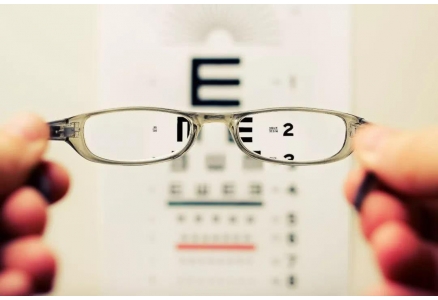Professor Bai Ji: Experience Sharing in SMILE Surgery -- From Passive to Active
With the continuous innovation of refractive surgery technology and the development of refractive cataract surgery, the problem of visual quality after refractive surgery has gradually attracted attention.At the 2018 Union Summit Forum, the first Union Summit Forum on Refractive Surgery and Keratopathy and the National Refractive Surgery Quality Control Class were also held. Top experts in the field of ophthalmology, especially in the field of refractive surgery and keratopathy, were invited to bring the most cutting-edge academic achievements and new technologies.
Professor Bai Ji shared his valuable experience in SMILE surgery at the conference. He vividly explained the development of the counterpoint technique in SMILE surgery center, which greatly benefited the participants.
After the conference, International Ophthalmology News was honored to invite Professor Bai to conduct a special interview on SMILE surgical techniques, center alignment, water separation method, postoperative astigmatism and other issues.

Smile process: From "unknown" to knowable, from passive to active
Before the introduction of SMILE device, Professor Bai proposed that the relationship between the lens and the optic axis must be considered if the lens is treated in the cornea, which is similar to the effect on Kappa Angle when excimer laser is performed using off-site.But primer design and excimer laser surgery lens and a slightly different, its negative pressure aspirator is curved, and corneal joint degrees higher, registration is in theory, the design ideal, but there are still some deviation in the clinical application, may shift by eye stimulation and position deviation, which in turn could lead to a series of visual quality problem, called a coma on optometry,That's the off-axis aberration.
Professor Bai analyzed that the development process of SMILE should be a process from "unknown" to "knowable". It is necessary for clinicians to know how to determine the location of Kappa Angle before surgery and determine the location of the treatment center according to the location of Kappa Angle.At present, there are a variety of examination devices in clinical practice that can complete the determination of Kappa Angle, such as corneal topographic map, aberration instrument, etc., which can accurately locate Kappa Angle or corneal vertex.This allows us to preoperatively transform the "unknown" central location into a known target location, which is extremely important for clinical specific cases, such as hyperastigmatism, hypermyopia, and large Kappa Angle.
As for how to improve the quality of the operation, Bai stressed the need to "change the counterposition from passive to active".In the past surgery, the best position of the surgical eye was not determined, so the patient's eye position could not be actively corrected to achieve the ideal position.
Professor white stressed that although the brain to the poor visual quality has certain correction ability, but never because of coma aberration correction ability and give up surgery correction (precise), in order to ensure that improve the quality of each patient's operation, will improve the quality of visual fine to each eye, the process is engaged in refractive surgery clinical doctors must be considered.
With the improvement of intraocular lens (IOL) and the increasing popularity of cataract surgery, there are some cases of poor postoperative results, mainly due to optical problems.The development of cataract surgery from the stage of restoration of vision to refractive surgery is a process worth celebrating, but it also brings more challenges to surgeons, because refractive cataract surgery requires not only the completion of IOL replacement, but also the improvement of the accuracy of IOL replacement position and Angle.This problem is particularly prominent in high-end IOL (aspheric IOL, astigmatic IOL, and multifocal IOL).
Application of water separation
Water separation was first proposed in 2014 ESCRS Conference. Compared with conventional methods, it was found that the lens was smoother and the edges were more orderly under water separation.In fact, when it was first proposed, it only considered the simplicity of operation, and it was not expected that it would be applied worldwide in recent years.The main reason for its popularity, Bai said, is that research has found that reducing laser energy can reduce intraoperative damage to the cornea, which in turn can shorten the recovery time after surgery and lead to better results.However, when the energy is reduced, the resistance of lens separation increases, and then the advantage of water separation appears.Therefore, low energy scanning combined with water separation is currently used in clinical practice to restore vision in a short time, and its therapeutic effect has been affirmed at home and abroad.In 2017, the Optometry Group of Ophthalmology Society of Chinese Medical Association recognized this treatment as one of the seven innovative highlights.
How to determine the best intraoperative energy
Professor Bai said that high energy scanning will inevitably bring damage to the tissue or irregular astigmatism, while too low energy may have greater resistance to separation.Due to differences in energy absorption among individuals, the commonly used method for judging appropriate energy in clinical practice is the "limit value" of energy.In addition, India also uses the bubble escape method for judgment.Although the methods are different, the common philosophy and principle is to choose the low energy value under the condition that the lens can be separated, and to choose the water separation when the separation encounters resistance.Professor Bai also said that the problem of energy setting has been under exploration, and hopes that it can be formulated and simplified in the future.
Astigmatism after cataract surgery
With the development of medicine and society, people have higher and higher requirements for the visual quality after cataract surgery, not only "cataract surgery", but also "augmentation surgery".At present, relevant studies have explored how to improve or improve postoperative visual function.
Improper management of the corneal incision during cataract surgery may lead to iatrogenic astigmatism.In addition, for patients with poor corneal condition before surgery, visual quality problems often occur after surgery.At this time, refractive surgery can be adopted, such as personalized methods such as corneal topographic map guidance and wavefront aberration guidance, to eliminate problems such as high-order aberration and residual astigmatism, so as to achieve good postoperative visual effects for patients.
Expert introduction

-
2021-06-07
-
2021-06-07
-
2021-06-07
-
In the 2020 Xiamen CCOS conference, Baiji ophthalmology sign Bai Ji's body has a lot of aura, one of the most famous experts in myopia surgery, "Bai Ji Ring" inventor,...2021-06-07
-
Baiji ophthalmology contracted to become ZEISS China Clinica In the 2020 Xiamen CCOS Conference, Baiji Ophthalmology signed a contract to become ZEISS China Clinical Technology Trai...2021-06-07
-
Professor Bai Ji: Experience Sharing in SMILE Surgery -- Fro With the continuous innovation of refractive surgery technology and the development of refractive cataract surgery, the ...2021-06-07








